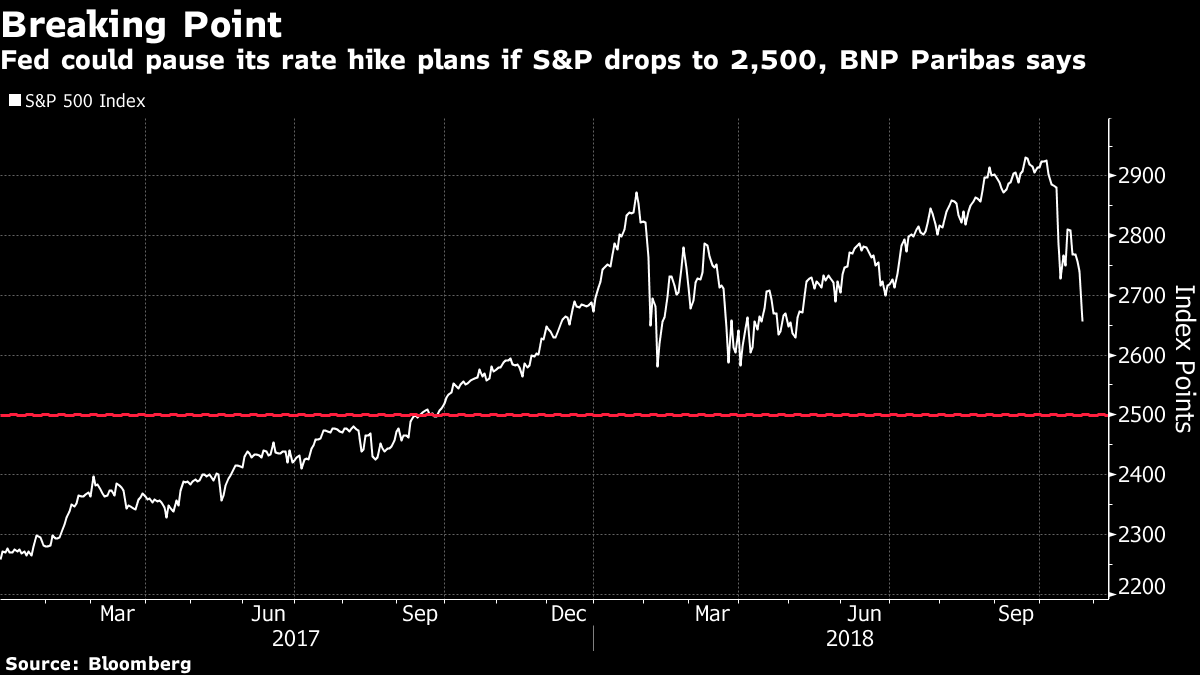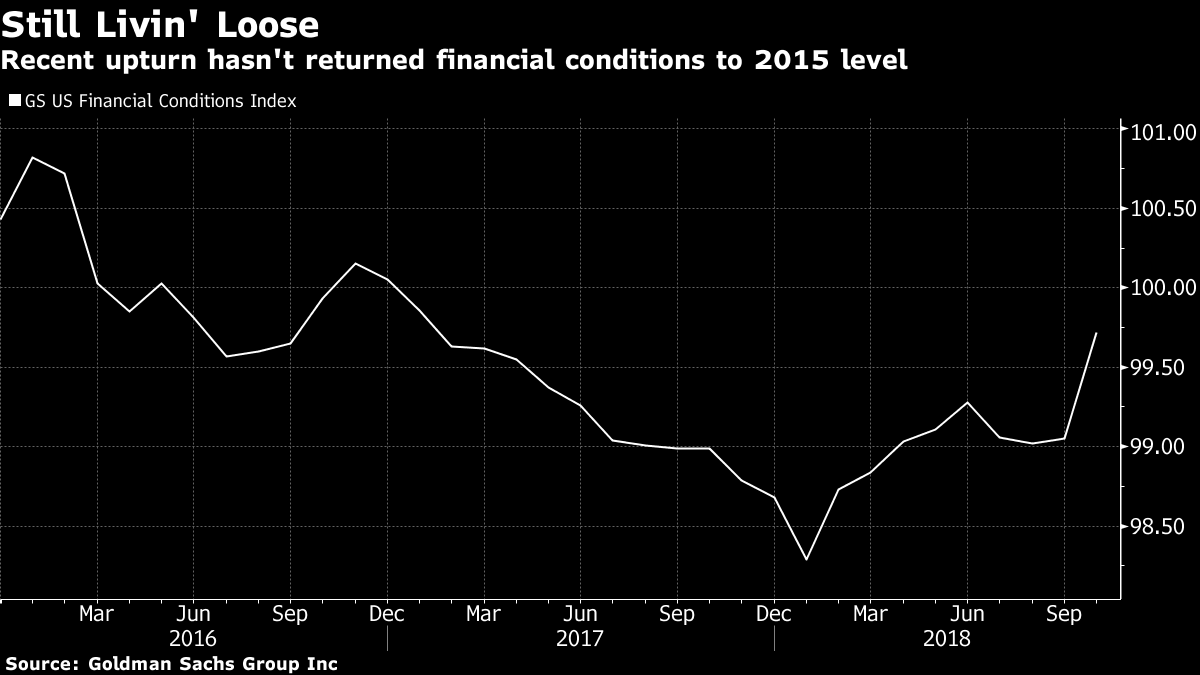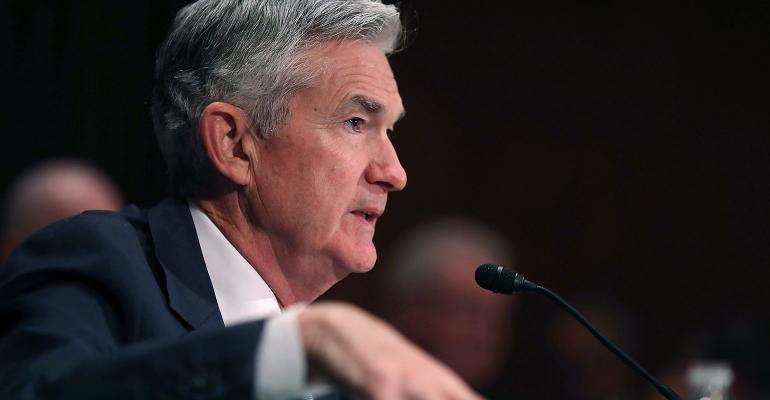By Natasha Doff
(Bloomberg) --Besieged global investors swimming in a sea of red are consumed with one magic number: the strike price of the so-called Powell Put -- or how much more blood stock markets need to shed before spurring the Federal Reserve to temper its hiking plan.
For now, a chorus of Wall Street voices say the $2 trillion tumble in U.S. equities this month has yet to tighten financial conditions to levels that would spark a dovish monetary offset. That’s even as traders in eurodollar markets lower wagers on interest-rate increases next year.
BNP Paribas SA reckons that a 6 percent drop in the S&P 500 Index to 2,500 is the resistance level to spur monetary redress. Evercore ISI has put it at least below the 2,650 mark, compared with the S&P 500 Index’s closing level at 2,656 on Wednesday.

Money managers at BlackRock Inc. and River Valley Asset Management, meanwhile, say the real economy remains relatively insulated from the stock meltdown.
“The correction that we’re seeing in the stock market obviously is something that they pay attention to,” Scott Thiel, deputy chief investment officer for fundamental fixed income at BlackRock in London said in an interview on Bloomberg TV. But “the bar is very high to change Fed monetary policy.”
The Fed needs something “more dramatic” than a stock rout to convince them to stray off course, Andre de Silva, global head of emerging-markets rates research at HSBC Holdings in Hong Kong, told Bloomberg TV on Thursday.
The S&P 500 Index closed down 3.1 percent Wednesday, with October on track to be the U.S. benchmark’s worst month since February 2009. As much as $6.7 trillion in value has been wiped off global equity-market capitalization since late September, according to data compiled by Bloomberg, compared with $7.8 trillion in the February correction.
The market rout has yet to inflict much pain on corporate bonds, a key component of financial conditions monitored by central bankers. The spread of junk bonds over investment grade corporate credit has narrowed about 14 basis points this year.
Monetary officials have downplayed bouts of market volatility in 2018, citing the health of the U.S. economic trajectory and the tight labor market.
After last month’s Fed meeting delivered an interest-rate increase, Chairman Jerome Powell hinted at the prospect of a pause in the hiking plan, notes Anand Ramachandran at River Valley Asset Management.
“He tackled it twice -- first by pointing out that market valuations are at the higher end of historic ranges, and from that perspective a correction would not be unusual,” the Hong Kong-based investor said. “Second, after a repeat question on the topic, he stated that the Fed looks at secondary effects and the nature of corrections.”
The S&P 500 has returned about 35 percent since the Fed began its tightening cycle in December 2015.
“A 10 percent to 15 percent drop in equities is usually the difference between noise and signal,” BNP Paribas analysts led by Bricklin Dwyer wrote in a note.

--With assistance from Garfield Reynolds, Nejra Cehic, Manus Cranny and Paul Dobson.To contact the reporter on this story: Natasha Doff in Moscow at [email protected] To contact the editors responsible for this story: Samuel Potter at [email protected] Sid Verma, Yakob Peterseil





